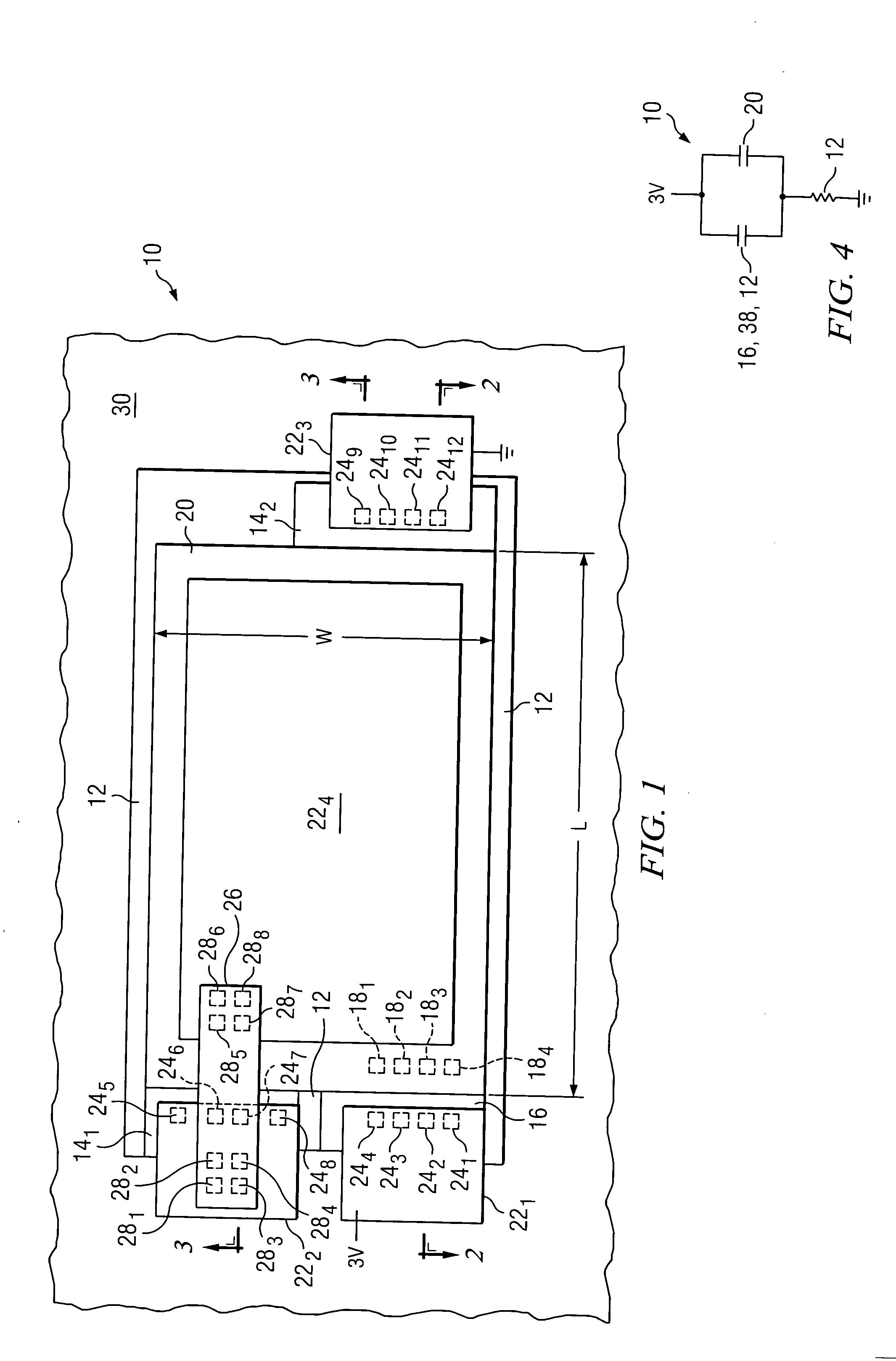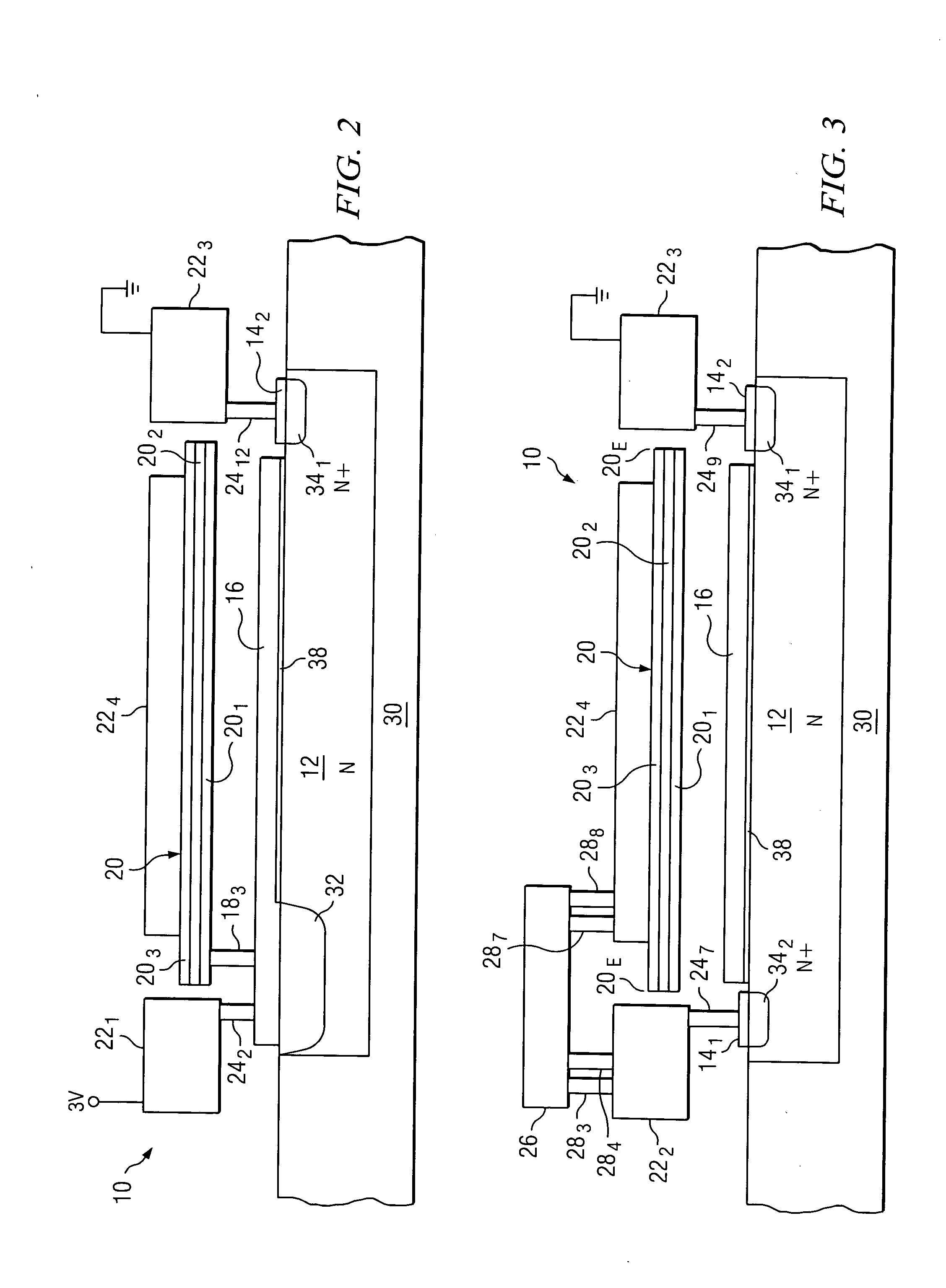High capacitive density stacked decoupling capacitor structure
- Summary
- Abstract
- Description
- Claims
- Application Information
AI Technical Summary
Problems solved by technology
Method used
Image
Examples
Embodiment Construction
[0014]FIG. 1 illustrates a top view of a decouplng capacitor structure 10 according to the preferred embodiment and built within a semiconductor integrated circuit. Structure 10, as explored further below in connection with FIGS. 2 and 3, is constructed using numerous layers from which various components are formed. Proceeding generally from a bottom-to-top approach in FIG. 1, structure 10 includes a well 12, preferably of an N-type material. Toward the top left and bottom right of structure 10 are two silicide regions 141 and 142 where active doped regions are underneath regions 141 and 142 but those active regions are not visible from the perspective of FIG. 1. In any event, electrical contact to either of silicide regions 141 and 142 provides contact, via the respective underlying active doped regions, to well 12. A doped polysilicon region 16 is visible toward the left of FIG. 1, and for reasons discussed later will be shown to extend a considerable distance in what is shown as ...
PUM
 Login to View More
Login to View More Abstract
Description
Claims
Application Information
 Login to View More
Login to View More - Generate Ideas
- Intellectual Property
- Life Sciences
- Materials
- Tech Scout
- Unparalleled Data Quality
- Higher Quality Content
- 60% Fewer Hallucinations
Browse by: Latest US Patents, China's latest patents, Technical Efficacy Thesaurus, Application Domain, Technology Topic, Popular Technical Reports.
© 2025 PatSnap. All rights reserved.Legal|Privacy policy|Modern Slavery Act Transparency Statement|Sitemap|About US| Contact US: help@patsnap.com



